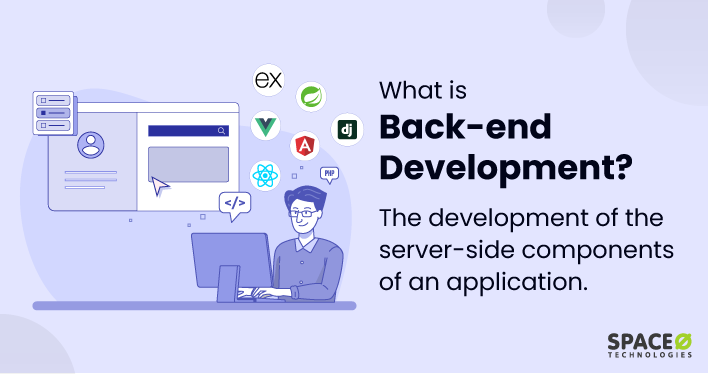Pulse of Information
Your source for the latest insights and updates.
Back-End Development: Where the Magic Happens
Discover the secrets of back-end development and unleash the magic behind amazing web experiences. Dive in to learn more!
Understanding APIs: The Backbone of Back-End Development
APIs, or Application Programming Interfaces, serve as crucial intermediaries in the world of back-end development. They enable different software applications to communicate with each other, allowing developers to build complex functionalities without having to create every component from scratch. Understanding how APIs work is fundamental for anyone looking to excel in back-end development, as they facilitate data exchange and service consumption between applications and servers. In a typical architecture, APIs can be RESTful or SOAP-based, with REST being the more commonly used approach due to its simplicity and flexibility.
Furthermore, the role of APIs extends beyond mere data transmission; they also enhance security and scalability in back-end systems. By providing a dedicated access point, APIs can enforce authentication protocols and log usage, allowing developers to monitor how external applications interact with their services. As businesses grow and their applications need to handle more users and requests, using APIs can streamline the process of integrating new features and third-party services, thereby enabling a more robust and adaptable architecture.

Common Back-End Development Frameworks Explained
Back-end development frameworks play a crucial role in creating efficient, scalable applications by streamlining the coding process. Some of the most popular frameworks include Express.js, which is designed for building web applications in Node.js, and Django, a high-level Python framework that encourages rapid development. Developers often choose these frameworks based on various factors, including ease of use, scalability, and community support. Other notable mentions are Ruby on Rails for Ruby developers, which emphasizes convention over configuration, and Flask, a lightweight Python framework that allows for flexibility in application structure.
Understanding the strengths and weaknesses of these frameworks is essential for any aspiring back-end developer. For instance, while Laravel provides a robust MVC architecture with an elegant syntax for PHP, it may not be the best choice for applications requiring real-time data processing. On the other hand, Spring Boot is highly favored for building enterprise-level applications in Java due to its extensive ecosystem and built-in features. By evaluating the specific needs of a project and the characteristics of each framework, developers can make informed decisions that lead to successful outcomes in their back-end development endeavors.
What Makes a Great Back-End Developer? Key Skills and Qualities
A great back-end developer possesses a unique blend of technical expertise and soft skills that sets them apart in the world of software development. Firstly, proficiency in programming languages such as Java, Python, or Ruby is crucial, as these languages form the backbone of server-side logic. They should also have a strong grasp of database management, understanding both relational databases like MySQL and NoSQL databases such as MongoDB. Additionally, familiarity with frameworks like Django or Node.js significantly enhances their ability to build efficient applications. Beyond technical skills, the ability to write clean, maintainable code is an essential quality that influences the scalability and performance of applications.
Aside from technical acumen, a great back-end developer should exhibit strong problem-solving abilities and analytical thinking. This involves not only being able to debug code but also architecting solutions that handle various use cases and scale as needed. Collaboration is another critical quality; they must work effectively with front-end developers, designers, and other stakeholders to ensure seamless integration and a smooth user experience. Furthermore, understanding the fundamental principles of API design and security best practices plays a significant role in building resilient applications. Embracing continuous learning to keep up with evolving technologies is the hallmark of a truly effective back-end developer.